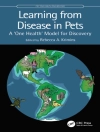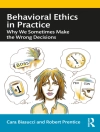A concise guide to the fundamentals of child psychopathology,
complete with the latest developments
Essentials of Child and Adolescent Psychopathology, Second
Edition provides a concise, accessible overview of the major
theories, assessment practices, and key issues. This updated
Second Edition describes the significant changes in the way
DSM(TM)-5 conceptualizes disorders in children and adolescents,
and includes a new chapter on child abuse, child maltreatment, and
self-injurious behavior. Using practical case examples to
illustrate key points, the book addresses specific disorders and
problems prevalent among this age group–including anxiety,
mood disorders, and traumatic stress. Each chapter features
reader-friendly elements like Rapid Reference, Caution, and Don’t
Forget boxes that call out important information, facilitating easy
look-up and quick navigation.
This invaluable resource fills the need for an overview of the
most current issues and changes in the field, allowing readers
to:
* Review the development, theories, and influences in child and
adolescent psychopathology
* Understand neurodevelopmental disorders including intellectual
and developmental disabilities, ADHD, and specific learning
disabilities or disorders
* Compare and contrast the manifestations of internalized vs.
externalized disorders
* Examine later-onset disorders and special topics including
eating disorders, substance abuse, and trauma-related
disorders
The book also includes appendices on ethical conduct, assessment
instruments, and IDEA 2004, providing readers the guidance and
tools that can help increase positive outcomes. Whether used as a
secondary text or as a professional reference, Essentials of
Child and Adolescent Psychopathology, Second Edition provides
an authoritative briefing on this evolving area of practice.
Inhaltsverzeichnis
Series Preface vii
Part I The Foundations
One: Introduction to Child and Adolescent Psychopathology: Development, Theories, and Influences 3
Two: Issues in Child and Adolescent Psychopathology: Ethical Issues in Research and Practice 25
Three: Issues in Clinical Decision Making: Diagnosis, Assessment, and Treatment of Childhood and Adolescent Disorders 42
Part II Neurodevelopmental Disorders
Four: Intellectual and Developmental Disabilities 73
Five: Attention-Deficit/Hyperactivity Disorder (ADHD) 93
Six: Specific Learning Disabilities 116
Part III Internalizing Disorders
Seven: Anxiety Disorders and Obsessive-Compulsive and Related Disorders 143
Eight: Disorders of Mood: Depression and Bipolar Disorder 171
Nine: Somatic Symptom and Related Disorders 195
Part IV Disruptive Behavior Disorders
Ten: Disruptive Behavior Disorders 213
Part V Later-Onset Disorders
Eleven: Feeding and Eating Disorders 231
Twelve: Substance-Related Disorders 252
Part VI Special Topics in Child and Adolescent Psychopathology
Thirteen: Trauma- and Stressor-Related Disorders 273
Fourteen: Children of Diverse Cultures 294
Appendix A Codes of Ethical Conduct 317
Appendix B References for Assessment Instruments and Resources 319
Appendix C Individuals with Disabilities Education Improvement Act of 2004 (IDEA 04) 323
References 327
Index 361
Über den Autor
LINDA WILMSHURST, PHD, is an Associate
Professor of Psychology at Elon University and a licensed clinical
(ABPP) and school psychologist. She has written six books,
including Clinical and Educational Child Psychology: An
Ecological-Transactional Approach to Understanding Child Problems
and Interventions (Wiley-Blackwell) and The Complete Guide
to Special Education: Expert Advice on Evaluations, IEPs, and
Helping Kids Succeed, Second Edition with Alan W. Brue
(Jossey-Bass).












